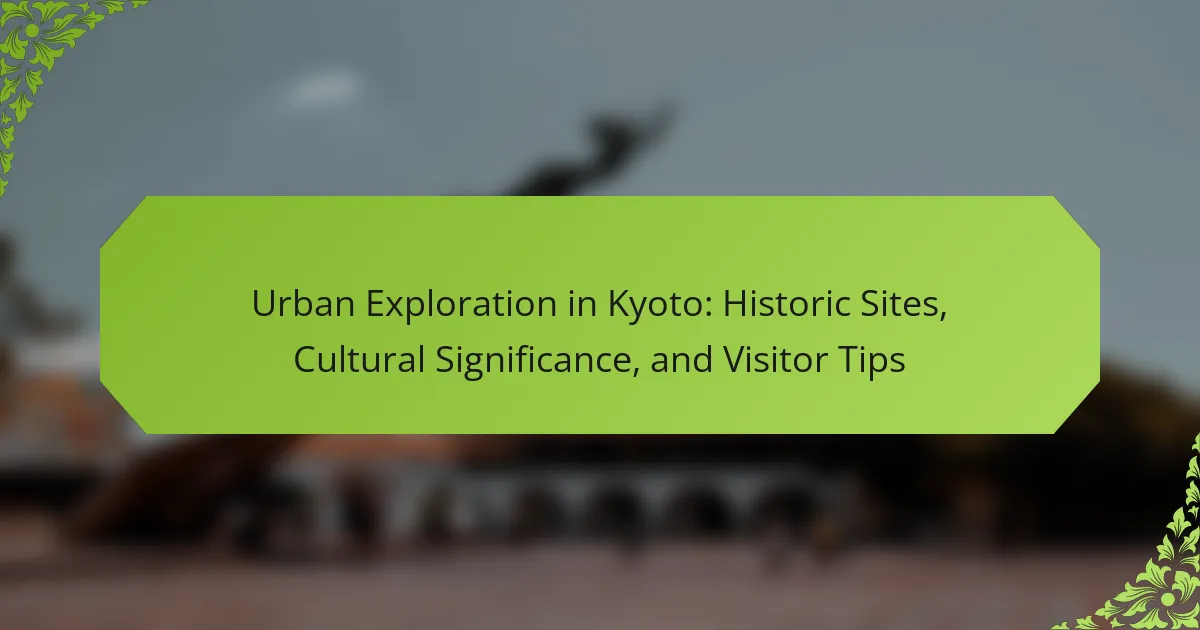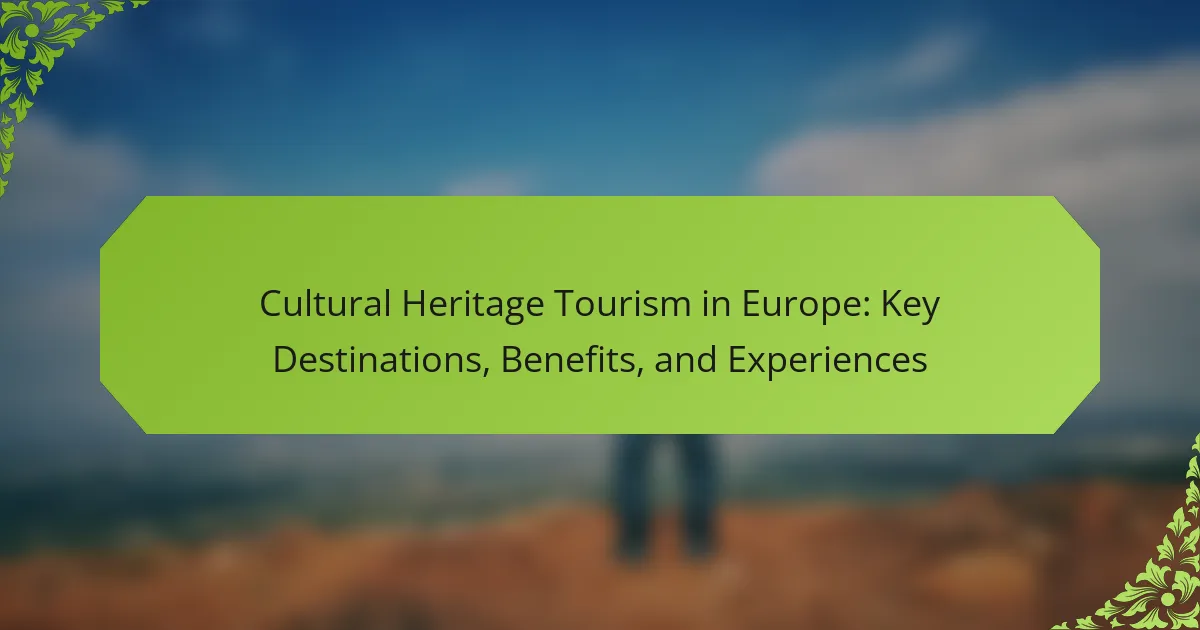Urban exploration in Kyoto offers a unique opportunity to discover historic sites, appreciate cultural significance, and navigate practical visitor tips. Key locations include Fushimi Inari Taisha and Kinkaku-ji, showcasing the city’s architectural beauty. Engaging with local customs enhances understanding, while exploring hidden gems reveals lesser-known aspects of traditional Kyoto life. Preparation and respect for heritage are essential for a rewarding experience.
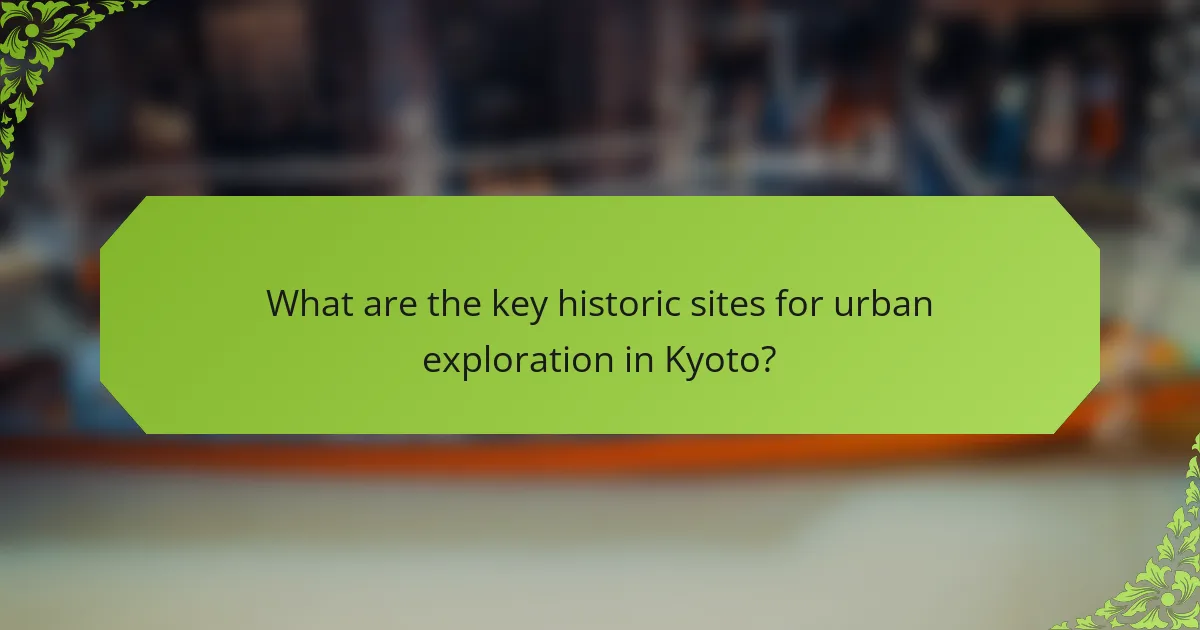
What are the key historic sites for urban exploration in Kyoto?
Kyoto offers numerous key historic sites for urban exploration, including temples, shrines, and traditional districts. Notable locations include Fushimi Inari Taisha, known for its thousands of vermilion torii gates; Kinkaku-ji, the Golden Pavilion; and the historic streets of Gion, famous for geisha culture. These sites reflect Kyoto’s rich cultural significance and architectural beauty, making them essential for visitors. Urban explorers can appreciate both the historical context and the serene environment these sites provide.
Which temples and shrines offer unique experiences?
Kyoto’s temples and shrines provide unique experiences through their architectural beauty, cultural rituals, and serene environments. Notable sites include Kinkaku-ji, known for its stunning golden pavilion; Fushimi Inari Taisha, famous for its thousands of vermillion torii gates; and Ryoan-ji, celebrated for its Zen rock garden. Each location offers distinct cultural significance and immersive experiences for visitors.
How do traditional tea houses contribute to the cultural landscape?
Traditional tea houses in Kyoto significantly enrich the cultural landscape by preserving heritage and fostering community. They serve as venues for tea ceremonies, showcasing the art of hospitality and mindfulness. These tea houses often reflect unique architectural styles, offering visitors an immersive experience of Japan’s aesthetic values. Additionally, they provide a space for cultural exchange, where locals and tourists can connect over shared traditions.
What role do ancient streets play in the exploration of Kyoto?
Ancient streets in Kyoto are vital for exploring the city’s rich history and culture. These pathways offer a glimpse into traditional architecture and local customs. Visitors can experience the charm of historic districts like Gion and Higashiyama, where preserved streetscapes transport them to earlier eras. Ancient streets also serve as cultural corridors, connecting significant temples, shrines, and artisan shops, enhancing the overall exploration experience. Engaging with these streets fosters a deeper understanding of Kyoto’s heritage, making them essential for any visitor.
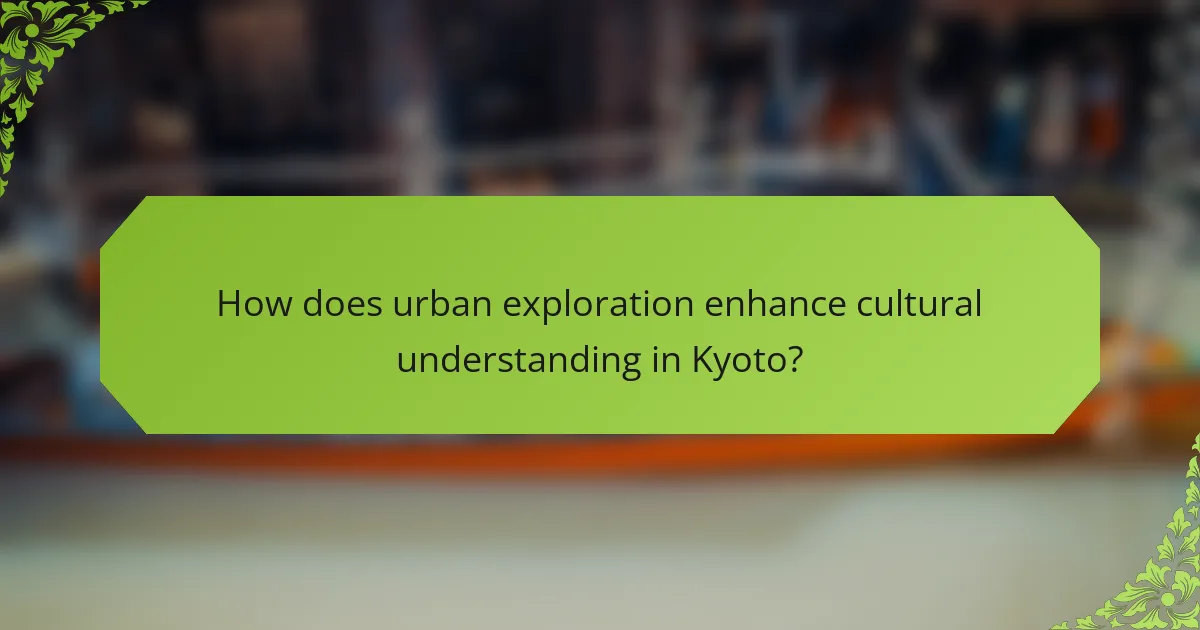
How does urban exploration enhance cultural understanding in Kyoto?
Urban exploration enhances cultural understanding in Kyoto by providing immersive experiences at historic sites. Engaging with local architecture, traditions, and art fosters deeper appreciation. Visitors gain insights into Kyoto’s heritage, contributing to a more nuanced view of Japanese culture. Exploring lesser-known areas reveals unique attributes, such as local festivals and artisan crafts, often overlooked in mainstream tourism. This hands-on approach promotes meaningful connections and cultural exchange.
Why is local cuisine significant in the context of exploration?
Local cuisine is significant in exploration as it enhances cultural immersion. In Kyoto, traditional dishes like kaiseki reflect the region’s history and values. Sampling local food fosters connections with the community and enriches the overall travel experience. Culinary exploration often leads to discovering unique attributes of Kyoto’s heritage, such as seasonal ingredients and preparation techniques that have been preserved over generations. Engaging with local cuisine allows visitors to appreciate the city’s cultural significance beyond its historic sites.
Which cultural festivals are essential for immersive experiences?
Kyoto hosts several cultural festivals that provide immersive experiences, including Gion Matsuri, Aoi Matsuri, and Jidai Matsuri. These festivals highlight the city’s rich history and traditions, attracting visitors year-round.
Gion Matsuri features processions of elaborate floats and traditional costumes, celebrated throughout July. Aoi Matsuri, held in May, showcases a ceremonial procession with participants dressed in ancient Heian period attire. Jidai Matsuri, celebrated in October, commemorates Kyoto’s history with a parade representing various historical periods.
These festivals not only offer entertainment but also deepen understanding of Kyoto’s cultural significance. Visitors gain insights into local customs, crafts, and cuisine during these events.
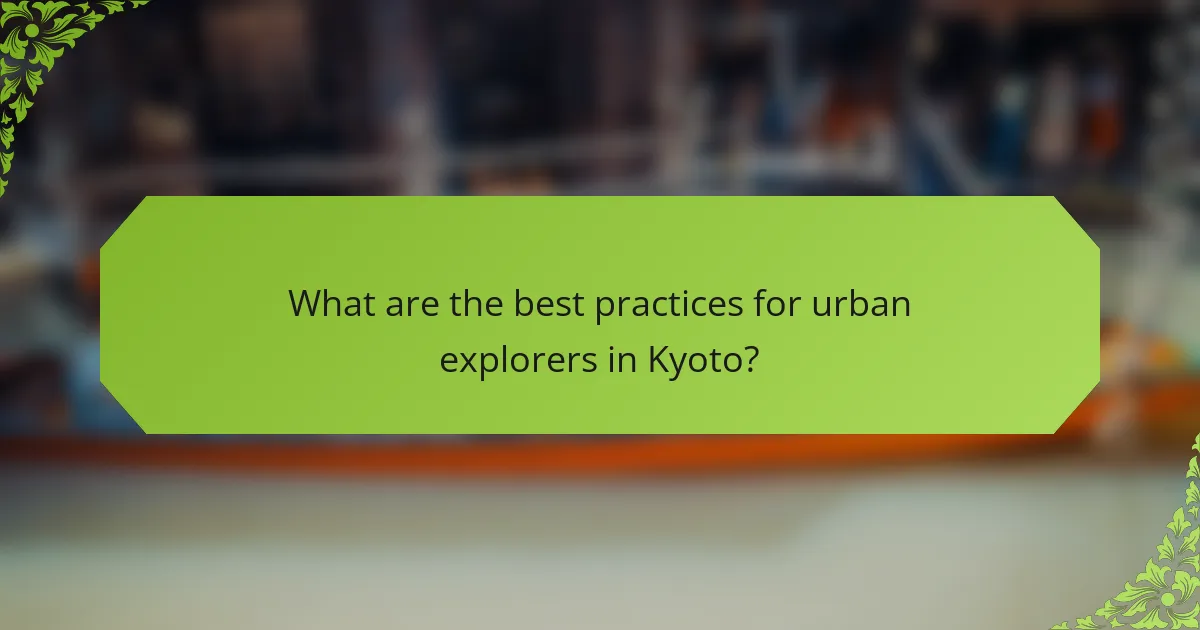
What are the best practices for urban explorers in Kyoto?
Urban explorers in Kyoto should prioritize respect for cultural heritage, safety, and local customs. Key practices include researching sites beforehand, visiting during off-peak hours, and staying within legal boundaries. Engaging with local communities enhances the experience and fosters goodwill. Always carry essential supplies like water and a first aid kit for safety.
How can visitors navigate the city effectively?
Visitors can navigate Kyoto effectively by using public transportation, walking, and utilizing mobile apps. Kyoto’s extensive bus and subway systems provide easy access to major attractions. Walking allows for deeper exploration of historic neighborhoods. Mobile apps offer maps and information on cultural sites, enhancing the experience. Visitors should consider purchasing a Kyoto City Bus & Kyoto Bus One-Day Card for unlimited travel.
Which ethical considerations should be taken into account?
Urban exploration in Kyoto raises several ethical considerations. Respect for private property is crucial; unauthorized access can lead to legal consequences. Preservation of cultural heritage is essential, as many sites are historically significant. Visitors should avoid vandalism and littering to protect the environment. Engaging with local communities respectfully enhances the experience and fosters positive relationships. Lastly, awareness of safety risks is vital to ensure responsible exploration.
What tools and resources enhance the urban exploration experience?
To enhance the urban exploration experience in Kyoto, utilize mobile apps, guided tours, and local resources. These tools provide valuable insights into historic sites and cultural significance.
Mobile apps like Google Maps and local exploration apps offer navigation and historical context. Guided tours led by local experts enrich the experience with stories and lesser-known facts. Additionally, visitor centers provide brochures and maps that highlight key attractions and hidden gems.
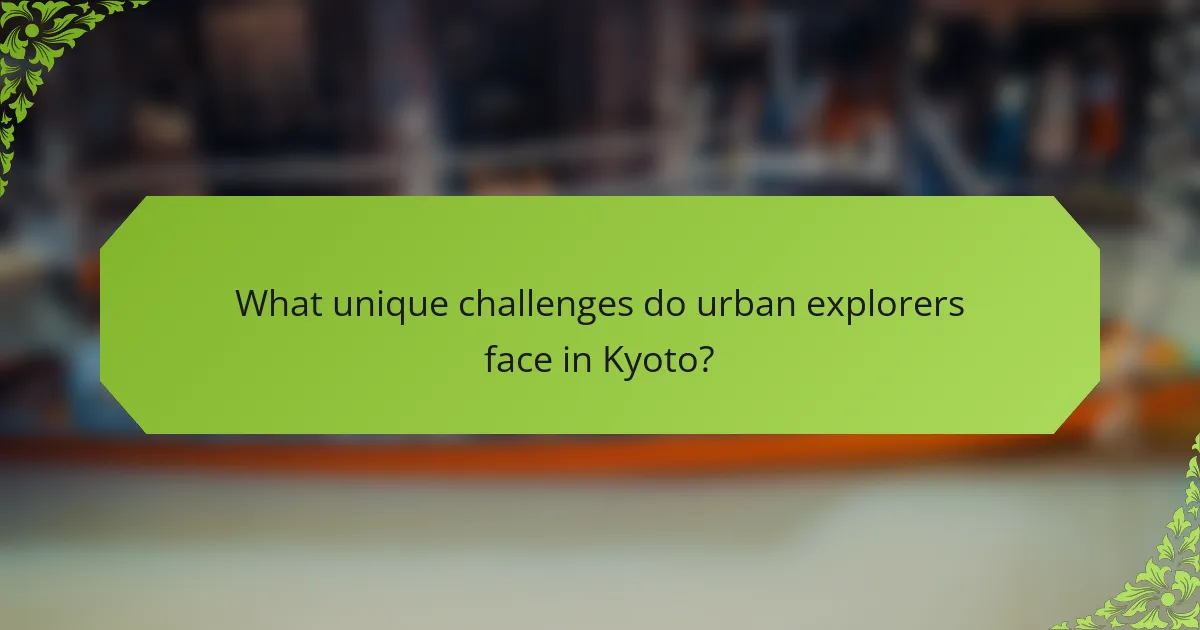
What unique challenges do urban explorers face in Kyoto?
Urban explorers in Kyoto face unique challenges such as navigating restricted areas, understanding cultural sensitivities, and dealing with language barriers. The city’s historic sites often have strict regulations to preserve their integrity. Urban explorers must respect these rules to avoid legal issues. Additionally, the rich cultural significance of locations requires explorers to be mindful of local customs. Language barriers can hinder communication, making it difficult to gather information or seek assistance. These challenges necessitate thorough preparation and cultural awareness for a successful exploration experience.
How does seasonal weather affect exploration plans?
Seasonal weather significantly influences exploration plans in Kyoto. Spring brings cherry blossoms, attracting many visitors, while summer’s heat may limit outdoor activities. Autumn showcases vibrant foliage, ideal for sightseeing, whereas winter offers a quieter experience with fewer crowds. Each season presents unique opportunities to engage with historic sites and cultural events.
What are common misconceptions about urban exploration?
Many misconceptions exist about urban exploration in Kyoto. Some believe it is solely about trespassing, while others think it lacks cultural significance. In reality, urban exploration often involves a deep appreciation for historical sites and local heritage. Additionally, some assume it is only for thrill-seekers, ignoring that many explorers seek to document and preserve cultural narratives. Misunderstandings about safety and legality also persist; proper research and respect for property can lead to rewarding experiences.
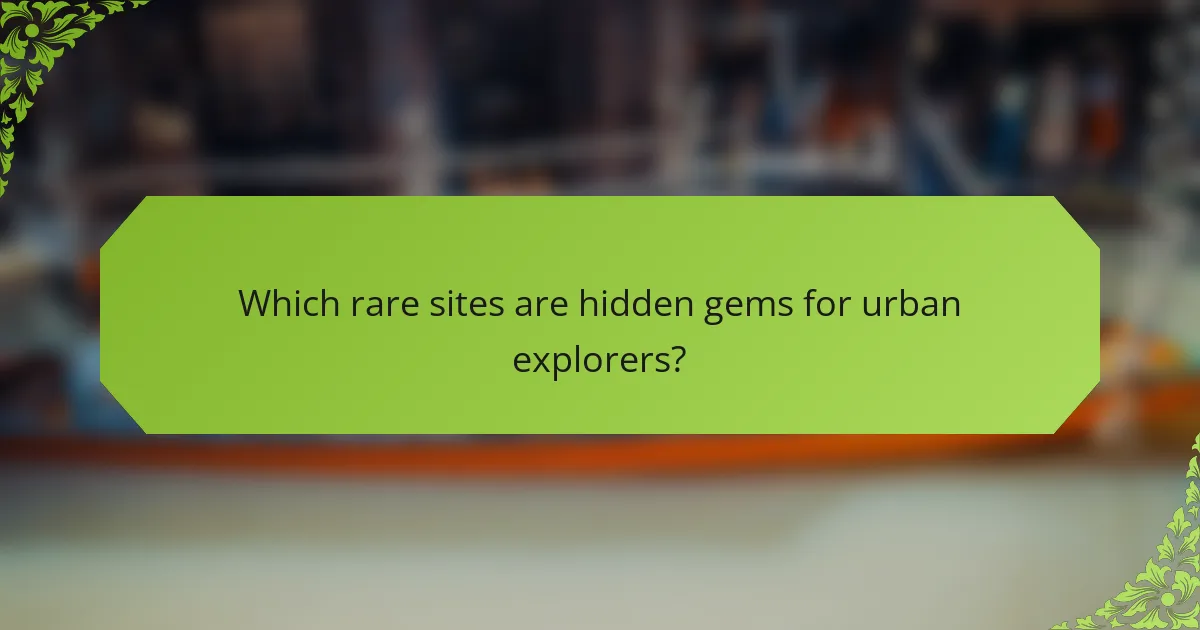
Which rare sites are hidden gems for urban explorers?
Kyoto offers several hidden gems for urban explorers, including the abandoned Nara Dreamland and the historic Kiyomizu-dera Temple. These sites showcase unique architectural styles and rich cultural significance, making them worthwhile visits. Urban explorers can also discover lesser-known shrines and old machiya houses that provide a glimpse into traditional Kyoto life. Engaging with these rare sites enhances the overall exploration experience.
How do lesser-known locations reflect Kyoto’s history?
Lesser-known locations in Kyoto reveal the city’s rich history through their unique architecture and cultural significance. For example, the Honen-in Temple showcases the Heian period’s aesthetic, while the Kyoto Imperial Palace reflects the evolution of Japanese governance. These sites often feature rare artifacts and serene gardens, providing insights into Kyoto’s past. Exploring these hidden gems enhances the understanding of the city’s historical narrative and offers visitors a chance to experience authentic cultural heritage.
What unique stories do these hidden sites tell?
Hidden sites in Kyoto tell stories of resilience, tradition, and cultural evolution. Each location reflects a unique aspect of the city’s rich history, from ancient temples to abandoned houses. For example, the ruins of the old imperial palace reveal insights into the lives of past emperors. Similarly, forgotten streets showcase architectural styles that have shaped Kyoto’s identity over centuries. These hidden narratives invite visitors to explore the depth of Kyoto’s heritage, enriching their experience.
How can explorers discover these rare sites responsibly?
Explorers can discover rare sites in Kyoto responsibly by prioritizing preservation and respect for local culture. First, research sites to understand their historical significance. Second, obtain permission when required, especially in private areas. Third, follow local guidelines and regulations to minimize impact. Lastly, engage with local communities to promote sustainable tourism and support conservation efforts.
What are expert tips for maximizing the urban exploration experience in Kyoto?
To maximize urban exploration in Kyoto, plan your itinerary around historic sites and cultural experiences. Start early to avoid crowds and allow ample time for each location.
1. Visit iconic landmarks like Kinkaku-ji and Fushimi Inari Shrine for their stunning architecture and significance.
2. Explore lesser-known temples and shrines to gain deeper insights into Kyoto’s spiritual heritage.
3. Utilize public transportation for efficient travel between sites; the city’s bus and train systems are reliable.
4. Engage with local guides or join walking tours to uncover hidden gems and historical narratives.
5. Sample traditional cuisine at local eateries to enrich your cultural experience.
6. Respect local customs and etiquette, especially in sacred places, to enhance your visit and connect with the culture.
